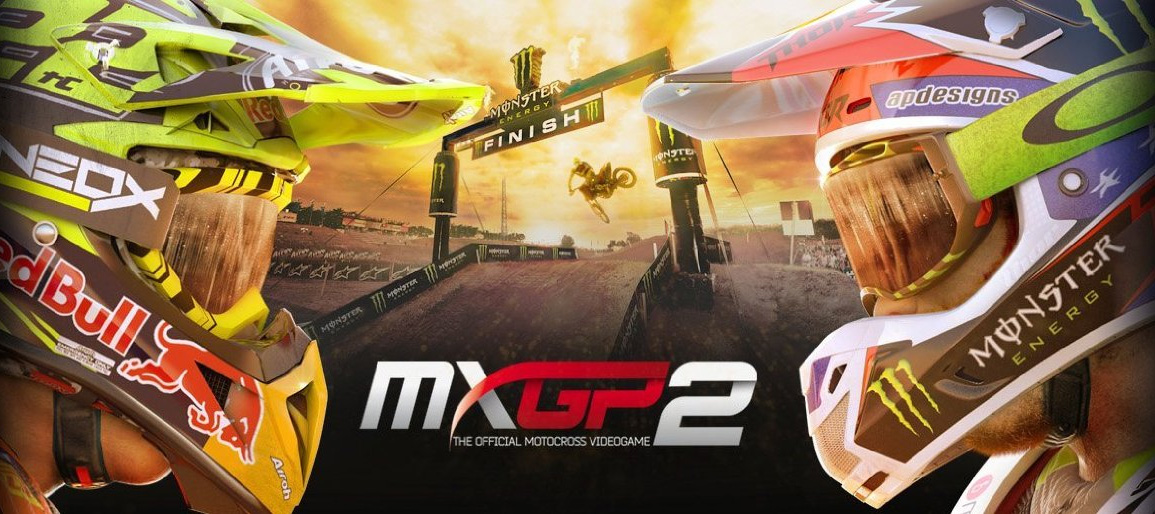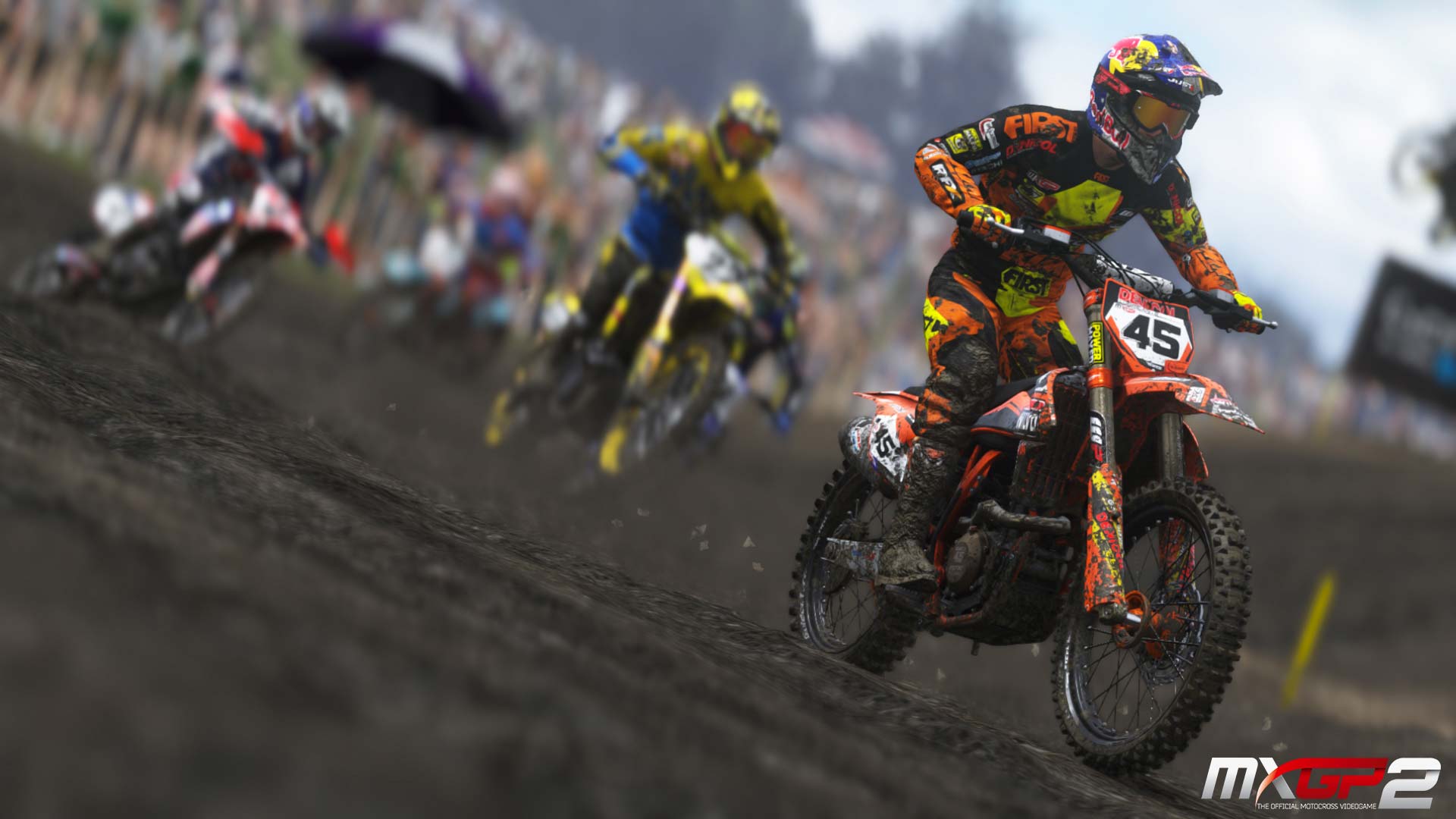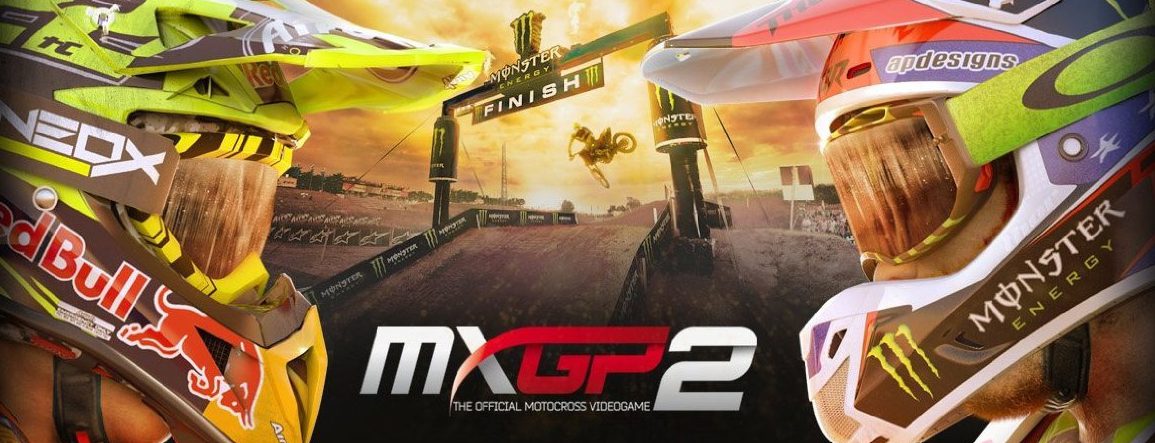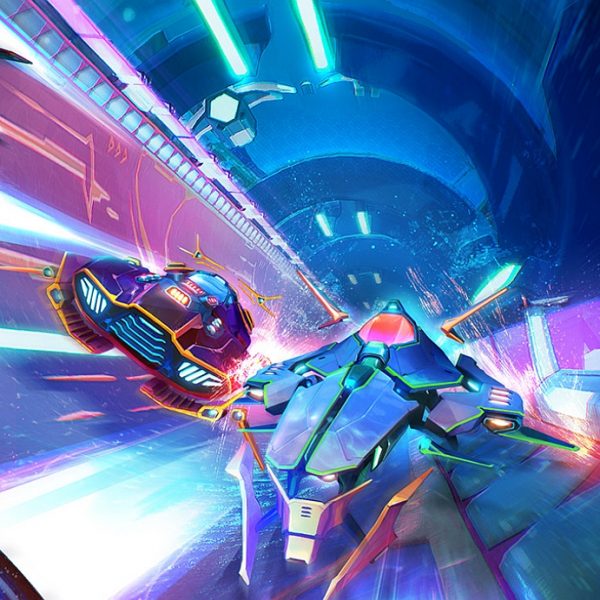Milestone’s mission to cover just about every facet of motorcycle motorsport reached a new height with the release of their officially licensed MXGP game. An alternative to their annual MotoGP series, the gritty dirt bike racing of MXGP offered a refreshing change of pace: finding speed on spine-shaking mud banks requires an altogether different approach to the smooth, fast flowing tarmac circuits of MotoGP.
MXGP was a vast improvement on their first attempt at an officially licensed dirt bike racer, too: the long-forgotten MUD (you can imagine the in-jokes that must have gone around the office since MUD was essentially the bike-equivalent to DiRT) is probably best remembered for its blatant Monster Energy drink product placement, which had you jumping through Monster Energy icons to get speed boosts. It was fun, but hardly a realistic depiction of motocross racing. Milestone’s games have come a long way since then, even if their ambitions still don’t meet their budgets.

MXGP 2 continues Milestone’s penchant for authenticity seen in its predecessor, with no compromises in the handling department. Indeed, this a very unforgiving motocross simulation with a steep learning curve: Motocross Madness, this is not.
Scrub up
As such, there’s much more to MXGP 2’s responsive controls than simply accelerating, braking and turning left or right. Activate the Pro difficulty mode, and you’ll also have to contend with balancing your weight distribution by utilising the right stick to lean the rider, as well managing the front and rear brakes independently. Milestone are on fine form here, as MXGP 2’s physics do a great job of simulating the physicality of motocross, even if the rider animation is unrealistically stiff.
Juggling the different mechanics is a tad overwhelming at first if you haven’t played many Motocross racing games (the handful of brief videos that teach you the basics don’t do a very good job of explaining the riding techniques – interactive tutorials would have been more effective). It’s worth spending some time on the Test Track to hone your skills.
That’s not to say MXGP 2 isn’t approachable on the easier settings after a bit of practice, but riding with the Pro mode is easily the most satisfying way to play MXGP 2. You get far finer control of the bike, as leaning into corners, shifting the rider’s weight back and forth as you approach a jump and tapping the rear brakes to get around tight corners gives you speed advantages. You can also now use the clutch to get a holeshot, which is the fastest way to start off the line.

Some of the more demanding circuits really test your ability to balance the bike. This is perhaps best showcased in the Glen Helen USA circuit with its stunning views, steep hillclimbs and uneven terrain. When it all comes together, there’s a lot of fun to be had in MXGP 2 as you perform huge jumps, jostle for position in some close races with some very competitive AI opponents (admittedly I had to switch the difficulty to easy to give me a better chance of securing a podium position – they’re perhaps too overpowered on higher difficulties) and narrowly avoid running over rivals when they take a tumble.
Mastering the advanced scrub and whip techniques is also encouraged: swiping the two analogue sticks in opposite directions will cause your rider to kick the bike’s back end out mid-jump, which not only looks impressive but also preserves some speed by reducing your air time which is highly rewarding.
Learning when to execute scrubs and whips is crucial, as they’re only effective during larger jumps – it’s easy to misjudge a jump and fall flat on your face. While using the two analogue sticks gives you accurate control of the bike and rider, scrubs and whips play out in canned animations that take over control of the bike – frustratingly, this can sometimes cause accidents that could have otherwise been avoided if you could correct your mistake. This issue was a common complaint by the community in the first MXGP game, so it’s disappointing to see it hasn’t been rectified in the sequel. You can, however, now control your bike mid-air as long as you’re not performing a scrub or whip which is an improvement.
With 22 riders vying for position on the narrow tracks, the slightest contact will inevitably send you flying off your bike in the higher difficulties, and first corner crashes are a regular occurrence as the riders cluster together. The resulting animation is more comical than brutal as your rider flops around the track.
What’s more frustrating however is that MXGP 2 tries too hard to safeguard you from crashing: stray slightly off-track and you’ll be abruptly teleported back on track from a standing start, disrupting the flow of the race and losing you positions. It’s unnecessary and frustrating when the reset kicks in when you could have easily recovered yourself with a slight adjustment.
Motocross madness
Unlike the original MXGP which was initially released on PS3 and Xbox 360 before being ported to PS4 a year later, MXGP 2 was developed exclusively for the current-gen consoles, so you would expect to see a significant visual upgrade. Sadly, this isn’t the case – MXGP 2 lacks the polish of a current-gen game, which only makes the long loading times less acceptable. Even some of the menus have separate loading screens.
The bikes and riders sport impressive levels of detail, particularly when viewed up close in the photo mode, but the same can’t be said about the bland-looking environments which suffer from noticeable pop-in and low resolution textures. Also, the less said about the creepy character models, the better: the flat-faced Monster Energy girl that starts each race still resembles a blocky character model from the PS2 era.

MXGP 2 has had some minor graphical improvements in its move to current-gen consoles however: lighting is more realistic and the crowds are noticeably denser (spectators are now animated and 3D instead of static 2D cut-outs at last), waving flags and cheering you along which adds some much needed spectacle and atmosphere, but you get the feeling MXGP 2 isn’t fully utilising the hardware and could have easily run on last-gen tech with few compromises.
The frame rate is at least smoother than before with no noticeable slowdown despite the increased number of on-screen riders from 16 to 22, but it’s still restricted to 30fps. There are no weather effects either which is disappointing – particularly as Milestone added weather to MotoGP 14 when it made the jump to current-gen consoles. In all honesty, if you played last year’s PS4 port of the original MXGP you’ll struggle to notice the difference in MXGP 2.
Much was made about MXGP’s dynamic track deformation, which was one of the original game’s more groundbreaking (no pun intended) features, but this feature has been noticeably downgraded in MXGP 2.
In the original game, the bikes carved deep grooves into the track which turned the track into a mud bog over time, presenting new challenges every lap as it affected the handling. MXGP 2’s tracks, in comparison, are flat and uninspired. The bikes leave light tyre trails in the ground, but there’s very little, if any, actual track deformation despite the back of the box touting MXGP 2’s “new physical terrain deformation”. It looks as if it was based on the Vita version of MXGP.

For a game based on a sport with so much attitude and adrenaline, MXGP 2 fails to encapsulate the excitement. The flat engine sounds don’t help: Milestone isn’t renowned for their audio design, and MXGP 2 doesn’t break the tradition when the bikes sound like tractors. Every bike sounds the same and there were occasions when the sound would cut out. Environmental sounds are practically non-existent too: you expect to hear some more substantial sound effects when your bike is tearing through hrough the different dirt surfaces or landing a hard jump.
Then there’s the sense of speed – or rather the lack of it. Granted, dirt bikes don’t have the raw speed of MotoGP’s superbikes, but the races lack intensity. Even adding some motion blur effects would have helped.
Disappointingly, only two camera options are available, but you can at least manually alter the third person camera to compensate. Expecting to find a better sense of speed in the first person camera will also leave you disappointed. Milestone has removed the shaky cam effects from the original which made the action intense and immersive – consequently the static first person camera in MXGP 2 doesn’t convey the sense that you are riding on bumpy terrain. MXGP 2’s first person camera doesn’t tilt when the bike leans, either. While this makes the game more accessible, it makes you feel disconnected from the movement of the bike – instead the camera just hovers over the bike unnaturally. It’s a disorientating effect.
Ride had a helmet camera which reacted to the bike’s movements, so why doesn’t MXGP 2? After experiencing the visceral viewpoint in DriveClub Bikes’ exceptional helmet camera, MXGP 2’s static first person camera looks embarassingly pedestrian.
Pimp my rider
Customisation plays a key role in MXGP 2, allowing you to create your own avatar and race in your own custom team as well as official teams. Instead of acquiring fans like in the last game, winning races now earns you credits which you can spend on modifing your bike with officially licensed parts such as new exhausts, brakes and suspension or pimping your rider with gear and clothing. The extensive customisation options give you some incentive to progress through the career to improve the performance of your bike to stay competitive and change the cosmetics to reflect your personality, but it’s hardly a revolutionary feature – especially when we’ve seen it all before in Ride and MotoGP 15.
The same can be said about the career mode which follows the tried and tested Milestone template we’ve seen in every racing game they’ve released over the past few years. Once again you start as a rookie wildcard looking to attract sponsorship. Perform well, and you’ll get noticed by more reputable sponsors and teams who will invite you to sign contracts via scripted emails from your manager before setting you increasingly more demanding race objectives.

MXGP is still a niche sport compared to the mass following that MotoGP has, and this is evident in some aspects of the game design. All the official riders are present across the MX2 and MX1 championships , as are all 18 tracks in the MXGP calendar, but MXGP 2 lacks some of the flair found in Milestone’s MotoGP games that immerse you into the world of the motorsport: there’s no official commentary, no video introductions for tracks, and the career is presented entirely through sterile text menus instead of an interactive office like in the original MXGP.
The Real Events mode, which has become a staple of the MotoGP series since MotoGP 14, makes its debut in the MXGP series which at least helps connect you to the real-world MXGP. Key moments from the 2015 championship are played out in all-too brief video clips before you have to re-enact the event in-game by completing objectives, such as Ryan Villopoto’s miraculous recovery in which he still beat his rival after his bike stalled at the start of the race.
With the exception of Real Events, every mode can be played online with up to 12 players, and there’s a large selection of options to set up a lobby, from AI difficulty to enabling ir disabling collisions. It’s very easy to knock other players off their bike, so choosing races with collisions disabled is probably wise. MXGP 2 seems to have sustained a loyal online community – I found over a dozen lobbies to enter, which is surprising for a niche game. It’s just a shame you can’t track how long a match has left or spectate whilst waiting in the lobbies.
There’s plenty of content in MXGP 2’s long list of modes and features to keep motocross enthusiasts invested, but there’s a strong feeling of déjà if you’ve played any of Milestone’s previous games. The MXGP license has its limitations, but it’s becoming a tiring routine.
MXGP 2 does at least include a handful of new modes to pad out its list of features on the back of the box. The new Stadium Series steers the series into Supercross territory with fictional indoor stadium tracks which are more compact compared to the MXGP tracks, but with only four forgettable tracks and no career implementation the Stadium Series adds little replay value and could easily have been released as DLC for MXGP.
MXGP 2 also focuses solely on the racing aspect when supercross games usually let you perform tricks, which could have been a fun, lighthearted distraction to the hard grind of racing. Unsurprisingly, MX. vs ATV Supercross Encore (notably the only direct rival to MXGP 2 on the market) offers a better representation of supercross.
Meanwhile, the new Monster Energy Motocross of Nations (MX0N) mode offers a more fleshed out experience. Based on the real annual event hosted after the main MXGP championship, each event is team-based as nations compete to achieve the best score with a different rider representing each nation in three consecutive events.
These additions aren’t enough to justify MXGP 2 being a full priced sequel, however – particularly when aspects like the track deformation, career presentation and first person camera are a step back from the first game.
MXGP 2 is a fun, authentic, but ultimately mediocre motocross game that handles well and is packed with content for the fans, but it doesn’t do nearly enough to improve on the foundation built by its predecessor. This is more MXGP 1.5 than MXGP 2.
Our Review
Summary
MXGP 2 is a fun, authentic, but ultimately mediocre motocross game that handles well and is packed with content for the fans, but it doesn’t do nearly enough to improve on the foundation built by its predecessor. This is more MXGP 1.5 than MXGP 2.































